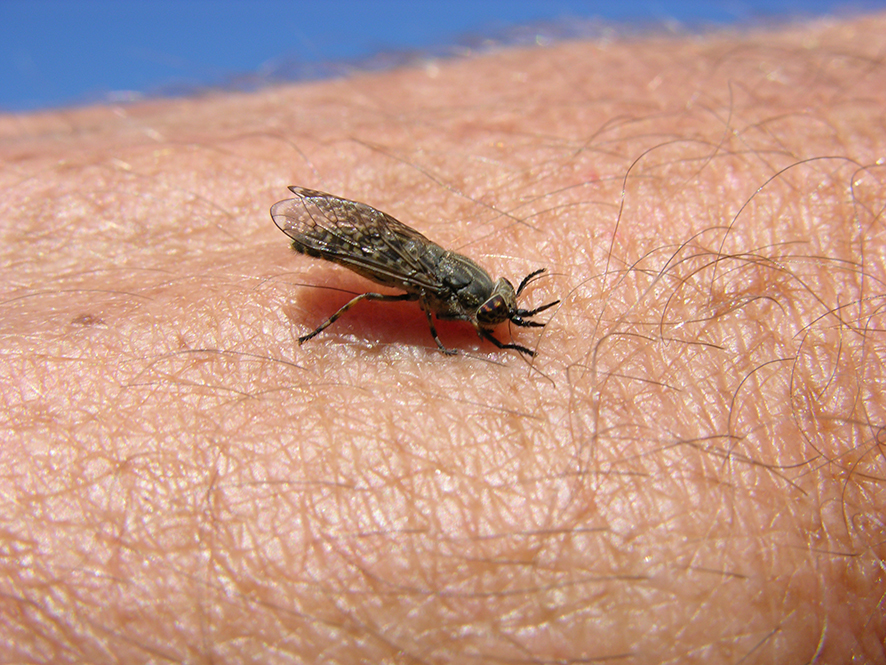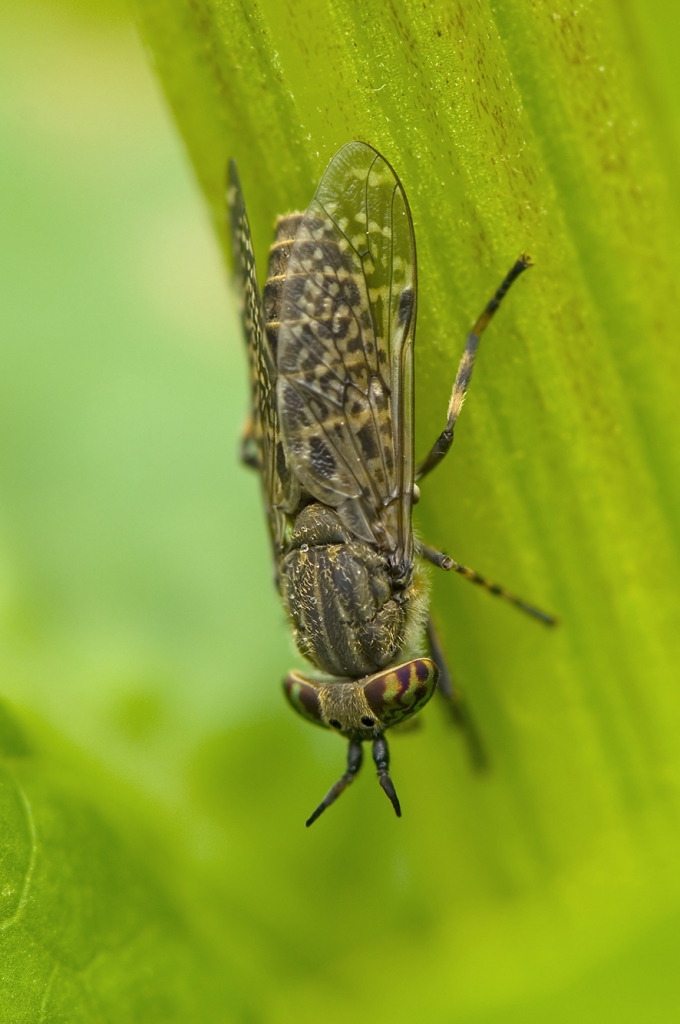The notch-horned cleg-fly
- Cleg and not horsefly
Clegs are often mistakenly called for horse-flies. Whereas clegs are large heavy flies that irritate with its painful sting, horses-flies are a bee-like parasite that does not sting, but lays its eggs on the horse's skin. The horse gets the larvae in its stomach when it uses its teeth to itch against the irritating animals.
There are several species of clegs. The most common cleg that causes irritation to people is the notch-horned cleg-fly. It is particularly apparent in hot and humid weather. If you go into the countryside on a warm summer’s day, the notch-horned cleg-fly can be very troublesome.
It is only the female that stings and sucks blood. Like the mosquito, it needs the protein in the blood to produce its eggs. Males live by sucking nectar from flowers. The larvae live as predators in moist habitats such as bogs, meadows and along lakes and streams.

Sticky clegs
In Danish, the name ’klæg’ is derived from the word ’klæbe’ (to stick), and most probably alludes to the fact that the cleg is very lethargic and slow when it stings, and is not easy to wave away. On the other hand, it is easy to give it a lethal whack. Unfortunately, this does not prevent the sting from becoming inflamed and causing itching and pain. Clegs do not have a poisonous sting, but its saliva does contain irritants.
Facts
The notch-horned cleg fly is about 10mm long. It has brown eyes and a narrow body shape. The wings are grey-brown with a marbled pattern of dark and light colours. It is often prevalent in moist habitats, as the larvae live in silt and mud in bogs and meadows. It is widespread throughout Denmark. The twin-lobed deerfly is another species of cleg that is prone to attack people. The twin-lobed deerfly is known by its large green eyes and the black and white speckled wings.


